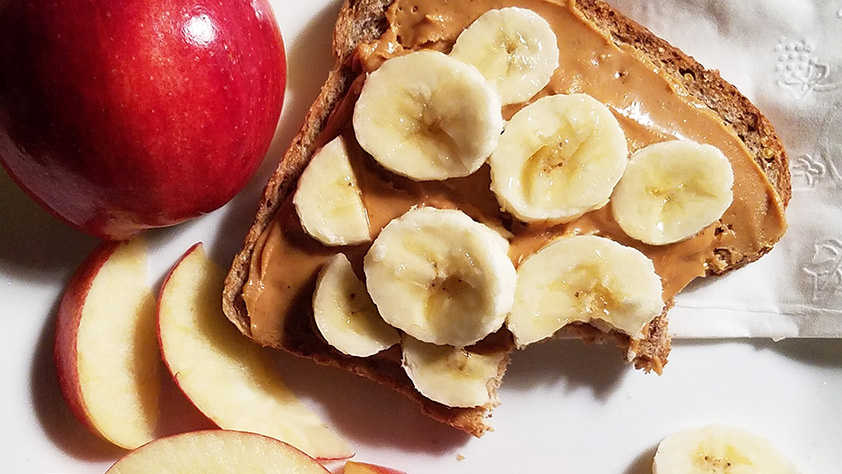Snacking throughout the day may seem sinful, but if you’re an educator, it’s critical. Experts agree that frequent snacking provides the body and brain with a steady supply of glucose to run efficiently. If that supply dips too low, you get foggy, cranky, even light-headed.
“After three hours without food, your blood sugar begins to fall, and after four hours, your body has already digested whatever you sent down earlier,” says Amy Jamieson-Petonic, M.Ed., R.D., who is a wellness coach at Cleveland Clinic’s Wellness Institute and a spokesperson for the Academy of Nutrition and Dietetics. “Once you cross the five-hour mark, your body starts to use glycogen (carbohydrate energy stored up in the liver and muscles) for fuel.”
Trouble is, convenient snacks often come in dangerous packages containing chips, cookies and candy. Don’t worry: Healthful snacking doesn’t have to be difficult. The trick, says Jamieson-Petonic, is selecting foods that have a balance of complex carbohydrates, protein and fat to help slow the absorption of glucose in the bloodstream.
Next time the afternoon slump hits, instead of reaching for caffeine, sugar or chocolate to stay on top of your game, try these five-minute fixes (keep a secret stash in your desk for quick-and-easy access!):
1. One red apple (they boast the most antioxidants) coupled with an ounce of low-fat cheese (string cheese is a good choice) and five whole-wheat crackers. The quintessential teacher’s fruit, apples are chock-full of energy-sustaining fiber and antioxidants such as vitamin C to keep your immune system running strong, says Patricia Bannan, M.S., R.D., author of Eat Right When Time Is Tight.
2. Peanut butter and banana sandwich. Dress up the typical school kid’s lunch by using bananas instead of jam (that was rumored to be Elvis’s late-night food fix). This healthful snack is loaded with heart-healthy fats from the peanut butter, potassium from the banana and fibrous whole grain in the bread.
3. Raw veggies and hummus. Buy ready-to-eat packs of baby carrots, sugar snap peas, broccoli and cauliflower and hummus, then tote them to work in a cooler bag. Veggies are low in calories and high in fiber, and the hummus adds protein and healthy fat, Bannan says. A bonus: Immune-boosting betacarotene and vitamin C in veggies such as carrots help counteract the effects of spending eight hours a day (or more!) in a germ-infested classroom.
4. Six ounces Greek yogurt, plus 1/4 cup low-fat granola. The combination of protein and calcium in the yogurt helps you focus. “Yogurt is more nutrient-dense than milk, boasting higher concentrations of protein and calcium,” Jamieson-Petonic says. “Plus, studies show that tyrosine, an amino acid in yogurt, is responsible for the production of the neurotransmitters dopamine and noradrenaline—both of which improve alertness and memory.” Extra credit: Yogurt contains immune-boosting probiotics. Just make sure it’s plain: Some flavored single-pack yogurts and yogurt drinks have more sugar than a candy bar.
5. Pistachios and dried apricots. This powerful sweet-and-savory combo packs fiber, protein and healthy fats. Stash the potent mix in your purse or desk drawer to keep hunger pangs at bay. The fiber, fat and protein fill you up without weighing you down. A bonus: Pistachios are the only nut boasting disease-fighting anthocyanins and resveratrol, while apricots are packed with important nutrients such as vitamin A, vitamin C, dietary fiber and potassium, and they weigh in at only 17 calories a pop.
6. Energy bars. Fruit and nut bars, assuming you can pronounce all of the ingredients, are a great choice, says Jamieson-Petonic, particularly if they contain at least three grams of fiber and four grams of protein. Look for bars with “whole” ingredients (dried fruit, nuts and seeds) that clock in at no more than 200 calories and less than 18 grams of sugar per serving.
7. Slices of roasted turkey on whole grain bread. A great on-the-go snack, turkey on whole grain provides protein and fiber for staying power. But check the labels: “Processed lunch meat can be high in sodium and preservatives called nitrates/nitrites,” Bannan says. “Look for brands that are nitrate/nitrite-free and contain no more than 500 mg of sodium per two-ounce serving.” Better yet, go organic. The organic standard requires meat to be free of antibiotics and preservatives.












